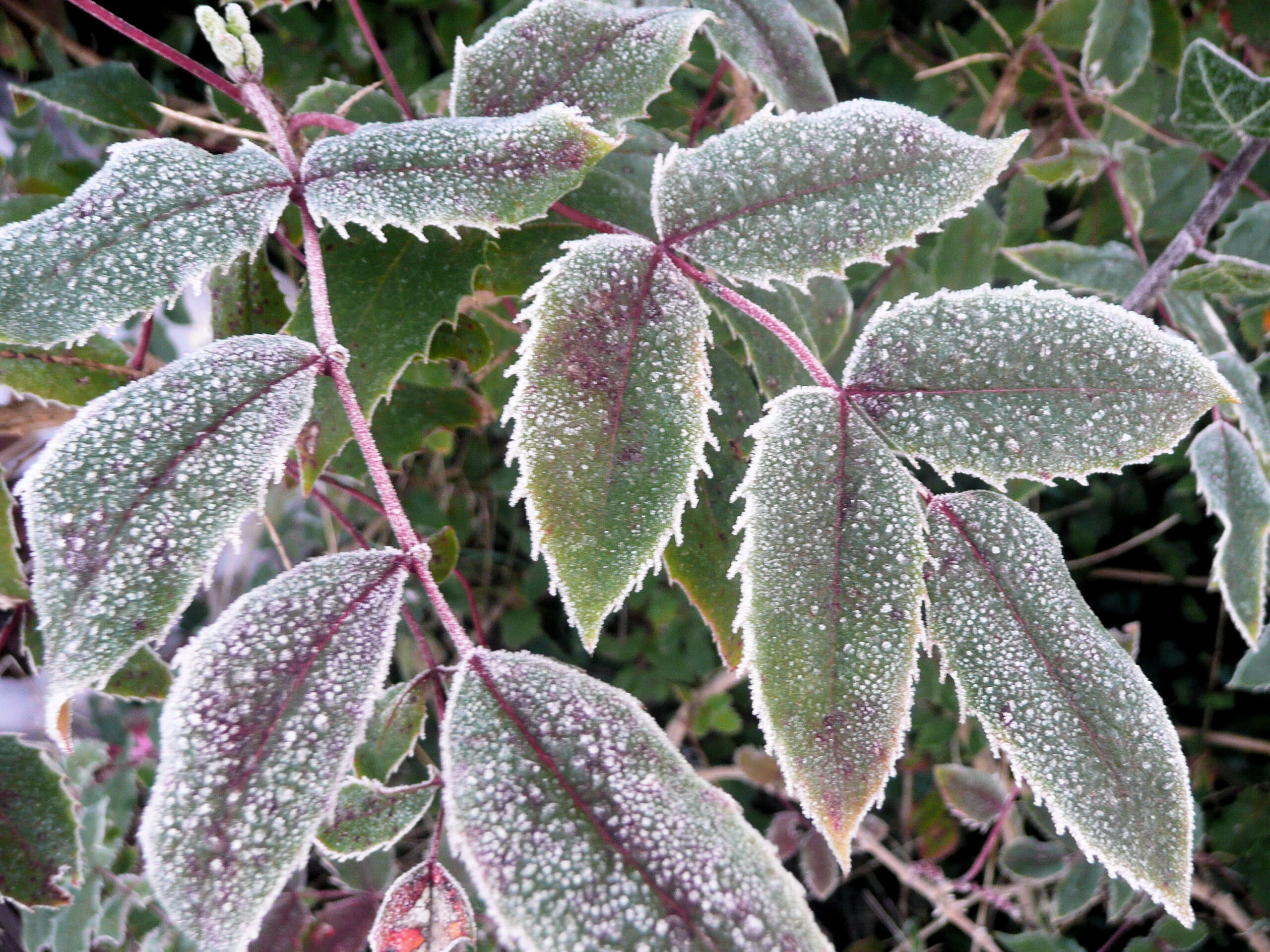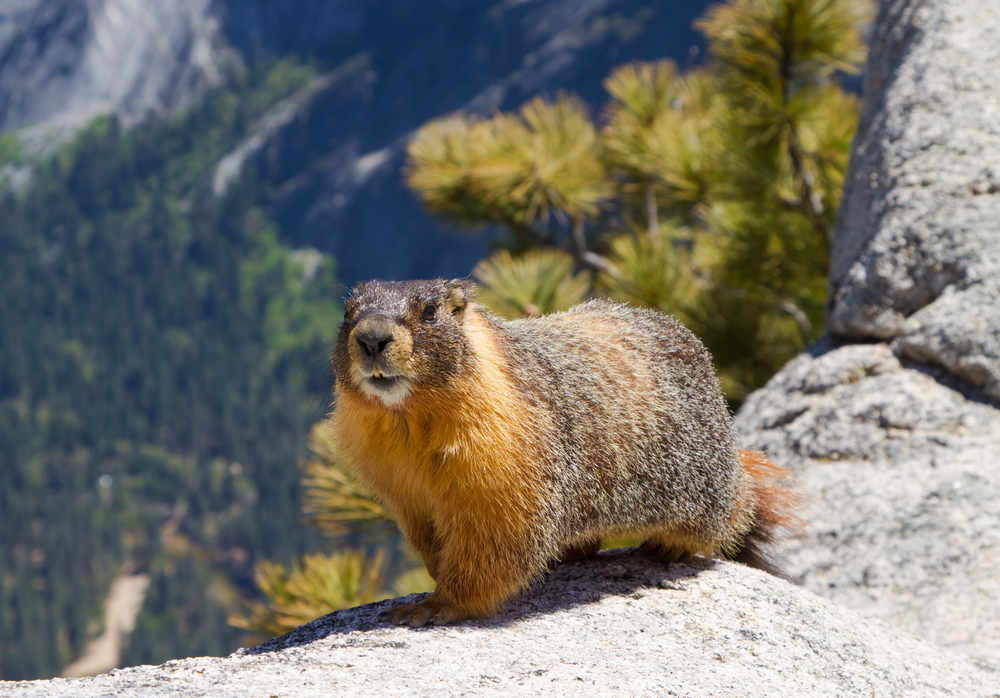
Groundhog Day in the Flathead: How marmots and ground squirrels can predict more than just the next few weeks of winter.
By Jessie Walthers, Conservation Program Manager
Groundhog Day. Who doesn’t love this most random of holidays, which features a chubby little mammal, but also captures our longing for spring this time of year.
We don’t have actual groundhogs in Northwest Montana, but we do have several similar species that are interesting critters to learn about. Seeing one of these animals in early February would be unusual, so probably not a good choice to predict an early spring or six more weeks of winter in the Flathead. Some of the species we do have are sensitive to temperature changes and other climate fluctuations, so they can tell us something about changing climate conditions in our region.
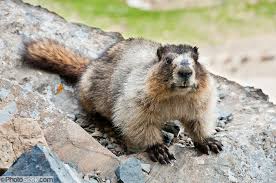
One groundhog-ish species we do have in Northwest Montana is the hoary marmot. The Montana Field Guide describes this creature as a “large, stocky rodent about 70 cm in total length and 5 kg in weight. Its head is broad and round with small, well-furred ears, and its neck is short.” It’s an herbivore and survives on native plants, including many flowering species. It lives in alpine and subalpine environments, occupying burrows in rock outcrops, boulder fields, or talus slopes, usually near meadows. They live in colonies of a male, a female, or possibly two, and the young of the year. They spend the better part of the year hibernating, from September to early May. This species of marmot is vulnerable to climate change, as they are sensitive to heat stress and high temperatures or drought that would impact their forage.
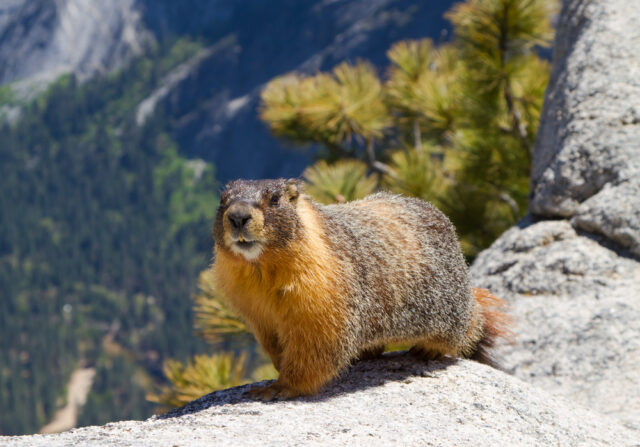
The hoary marmot’s cousin, the yellow-bellied marmot, is found more broadly distributed throughout most of Montana except the eastern part of the state. While the hoary marmot is more greyish/brownish in color all over, the yellow-bellied marmot, true to its name, is golden color on its body, even onto its back, with a greyish face. This species is not listed as a sensitive species in Montana, but could also be impacted by changing temperatures. Their hibernation occurs from approximately September to May. Interestingly, studies have shown that these long periods of hibernation may contribute to a longer lifespan than other small mammals, as their aging processes seem to be suppressed while they are in a hibernation state.
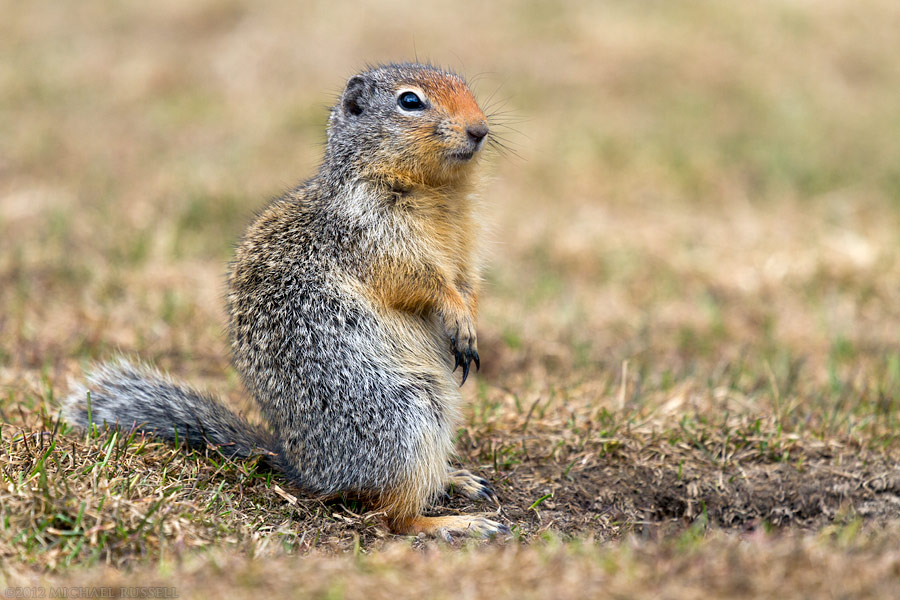
Another animal similar to groundhogs, but smaller and slimmer, are ground squirrels. We have several species of ground squirrels in Northwest Montana; the most common is the Columbian ground squirrel. These animals are much smaller than a marmot, weighing approximately one pound and are about 10 inches in length. They are found throughout Western Montana. They eat a variety of grasses, leafy vegetation, and bulbs of plants. They may eat fruits and seeds or small amounts of insects, carrion or even fish. They also hibernate, usually emerging as early as April at lower elevations or June at higher elevations.
Another species of ground squirrel found throughout Western Montana is the golden-mantled ground squirrel. This species is similar in size to the Columbian ground squirrel. Its name comes from a golden “mantle” on its shoulder area. It has stripes on each side of its back, one white stripe with black stripes bordering the white stripe. The coloration is similar to a chipmunk, but this animal is larger and has a shorter tail. They live in rocky areas, on the edges of forests and meadows. Their hibernation window is usually October to March or April. They eat flowering plants, seeds, nuts, roots, fungi, and even bird eggs, insects and carrion. They are a good food source for their many predators including coyotes, weasels, hawks, and grizzly bears. These animals may be more sensitive to climate change. One study at the University of Colorado at Boulder has shown that golden-mantled ground squirrels, along with other small mammals, including yellow-bellied marmots, are climbing higher into the mountains to escape warming temperatures. The study, which looked at 50 species of small mammals, showed that the ranges of these animals have shifted by an average of more than 400 feet higher in elevation since the 1980s.
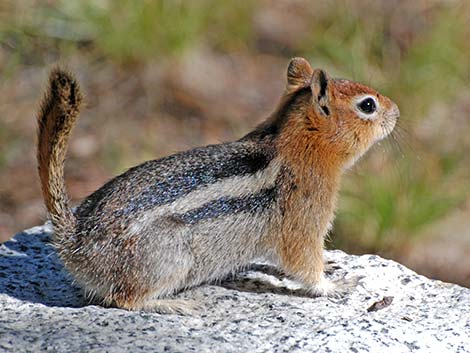
So, this year, when that big groundhog in Punxsutawney, Pennsylvania gets lifted into the air, we can ponder our local, native species of marmots and ground squirrels, who are hopefully slumbering peacefully for another few weeks or months. They may not be predicting our upcoming weather this spring, but their forage, habitats and habits may be telling us more important things about our shifting climate.

